11 Best Flowers That Don’t Need Deadheading (Transform Your Garden Today!)
If you’re looking to create a vibrant garden without the hassle of constant maintenance, you’re in luck! There are plenty of stunning flowers that thrive beautifully without the need for deadheading. These blooms not only keep your garden lively but also offer a burst of color and charm throughout the season. Whether you’re a seasoned gardener or a newbie, these resilient beauties are perfect for filling your outdoor space with life and color.
Let’s explore the 11 best flowers that require no deadheading, giving you more time to enjoy your garden and less time worrying about upkeep. Say goodbye to tedious gardening tasks and hello to a flourishing, low-maintenance paradise!
Contents
- 1. Daylilies
- 2. Black-Eyed Susans
- 3. Coneflowers (Echinacea)
- 4. Sedum
- 5. Lantana
- 6. Russian Sage
- 7. Zinnias
- 8. Marigolds
- 9. Coreopsis
- 10. Asters
- 11. Pansies
1. Daylilies
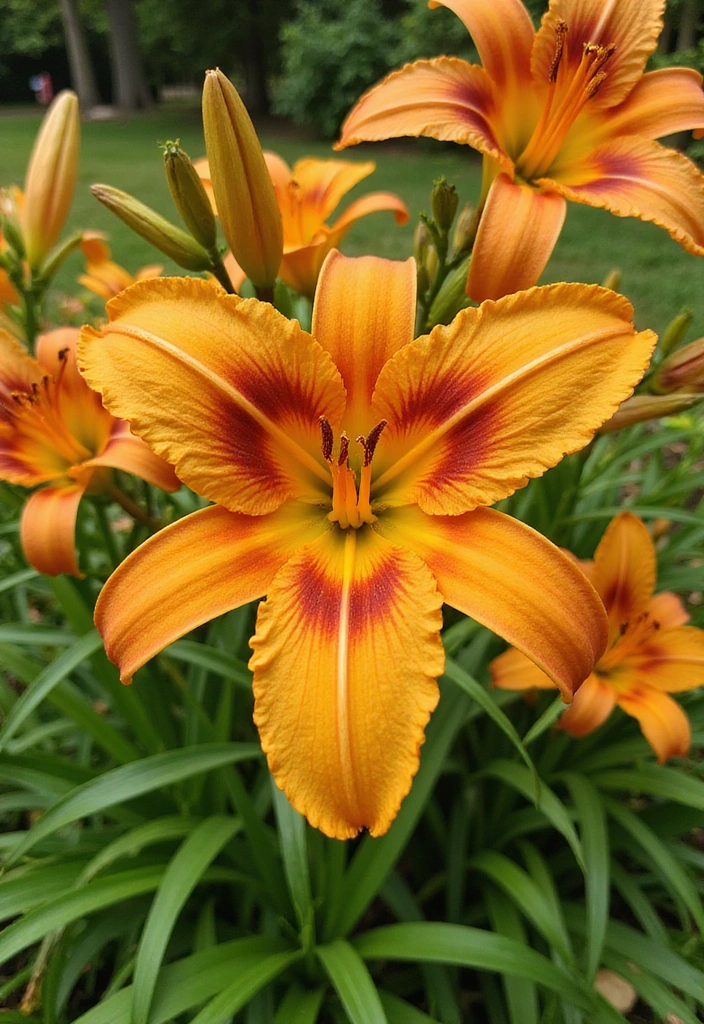
Daylilies are the ultimate garden superstars. These drought-tolerant beauties come in a dazzling array of colors and shapes, making them perfect for any garden design. What’s great about daylilies is they bloom for a day, but each plant produces countless buds throughout the season. So, you get more blooms with less work!
These hardy perennials thrive in almost any soil and can tolerate poor conditions, making them ideal for busy gardeners. Plus, they attract pollinators like bees and butterflies, adding life to your garden. Consider planting them in clusters for maximum impact, and enjoy their delightful fragrance wafting through your outdoor space.
Quick Tips:
– Group different varieties together for a stunning visual display.
– They thrive in full sun but appreciate some afternoon shade on hotter days.
– Fertilize once a year in early spring for best blooms.
2. Black-Eyed Susans

Black-eyed Susans are the cheerful sunshines of the flower world! With their golden-yellow petals and dark centers, these perennial flowers bring a sunny vibe to gardens and landscapes. They are incredibly low-maintenance and can thrive in poor soil conditions, making them a favorite among gardeners who want a vibrant garden without much effort.
These beauties bloom from late spring to fall, providing a long-lasting splash of color. They also self-seed, meaning they can spread their cheer year after year without any intervention.
Planting Tips:
– Plant them in full sun for optimal growth and flowering.
– They attract butterflies and birds, making your garden a lively spot.
– Cut them back in early spring to promote new growth.
3. Coneflowers (Echinacea)
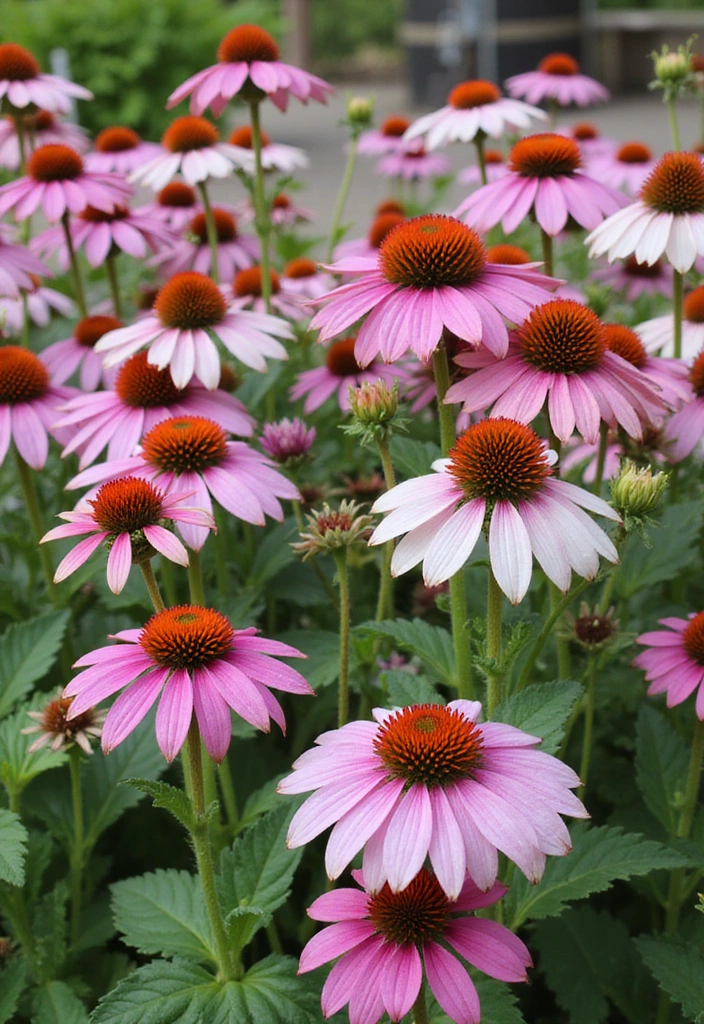
Coneflowers, or Echinacea, are not just pretty; they’re also tough cookies! These hardy perennials bloom in a variety of colors, including pink, purple, and white. They are drought-resistant, making them perfect for gardens that endure hot summers. With their daisy-like appearance and unique cone shape, they add a whimsical touch to any flower bed.
These flowers are also known for attracting pollinators, especially butterflies. They can handle poor soil and require little care, aside from occasional watering. Plus, their seed heads provide winter interest and food for birds, making them a year-round asset to your garden.
Care Tips:
– Dead leaves can be removed in spring, but no deadheading is necessary.
– Plant in full sun to part shade; they’re adaptable!
– They can be divided every few years to keep them healthy.
4. Sedum

Sedum, commonly known as stonecrop, is a fantastic choice for those who want a hardy, drought-tolerant plant in their garden. With thick, succulent leaves and clusters of small flowers, sedum adds unique texture and color to your landscape. They thrive in poor soil and are perfect for rock gardens or as ground cover, making them versatile and practical.
Sedum blooms in late summer to early fall, providing a burst of color when many other flowers fade away. Plus, they require minimal care, only needing occasional watering. Their low growth habit makes them excellent for edging or filling in gaps in garden beds.
Planting Recommendations:
– They thrive in full sun and well-drained soil.
– Consider mixing different varieties for a stunning visual contrast.
– Great for attracting pollinators, especially bees.
5. Lantana
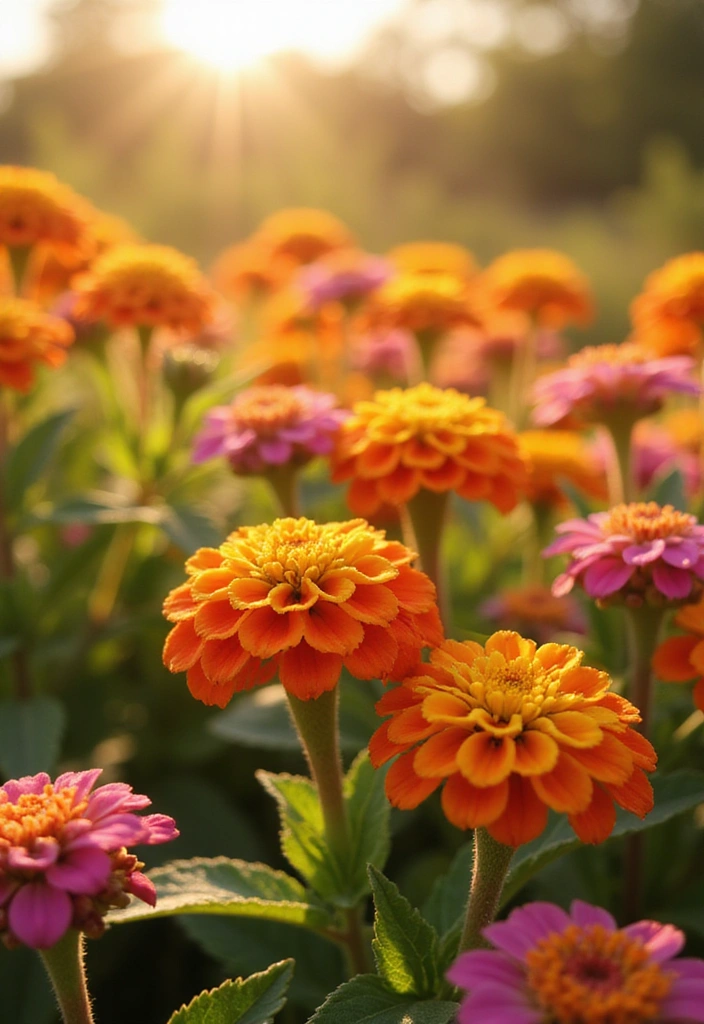
Lantana is a vibrant, tropical flower that can brighten up any garden. Known for their clusters of tiny blooms that come in various colors, including orange, yellow, pink, and purple, they are a favorite among pollinators. These flowers thrive in warm climates and are highly drought-resistant, making them perfect for sunny garden spots.
One of the best things about lantana is they bloom continuously without needing deadheading. They also have a lovely fragrance, which can fill your garden with delightful scents. Perfect for containers or as border plants, lantana can enhance the look of your outdoor space beautifully.
Cultivation Tips:
– Plant in full sun for the best flower production.
– They can handle a variety of soils, even sandy ones.
– Regular watering encourages vigorous growth.
6. Russian Sage
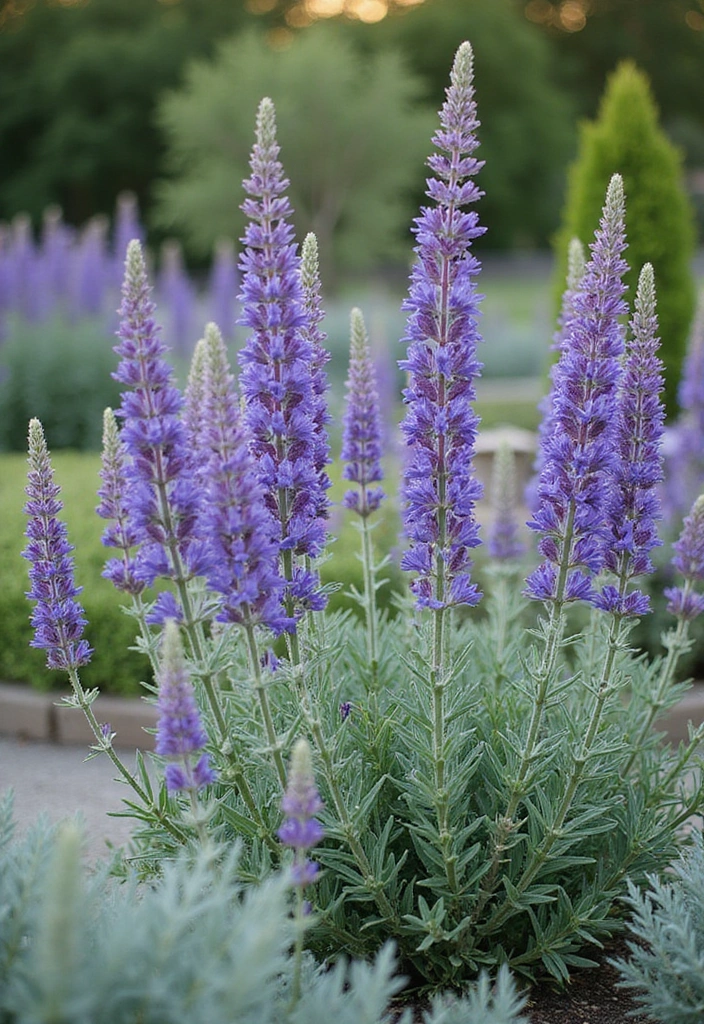
Russian Sage is a stunning, drought-tolerant perennial known for its fragrant, silvery foliage and tall spikes of purple flowers. This perennial brings a soft, airy feel to your garden—perfect for creating a relaxed atmosphere. Not only does it look beautiful, but it also attracts butterflies and hummingbirds, adding even more life to your outdoor space.
Russian Sage thrives in full sun and can tolerate poor soil, making it incredibly low-maintenance. Plus, it requires no deadheading, allowing you to enjoy its beauty without the fuss of constant upkeep.
for Growing:
– Pruning in early spring can help promote bushier growth.
– Space them out properly to avoid overcrowding, as they can grow quite large.
– Excellent for borders or as a backdrop for shorter plants.
7. Zinnias

Zinnias are the go-to flowers for vibrant color and easy growth. Coming in a rainbow of colors, they are perfect for adding cheerful pops of color to your garden. These annuals are highly resilient, thriving in a variety of conditions, and they bloom from spring until frost. The best part? They don’t require deadheading!
Zinnias are also fantastic for attracting butterflies, making them a delightful addition to any garden. They make excellent cut flowers too, so you can enjoy their beauty indoors as well as outside. Their bright, cheerful flowers are sure to lift your spirits!
Growing Tips:
– Plant in full sun for the most vibrant blooms.
– Water regularly, especially during dry spells, but avoid soggy soil.
– Space plants to allow for good air circulation and reduce the risk of disease.
8. Marigolds
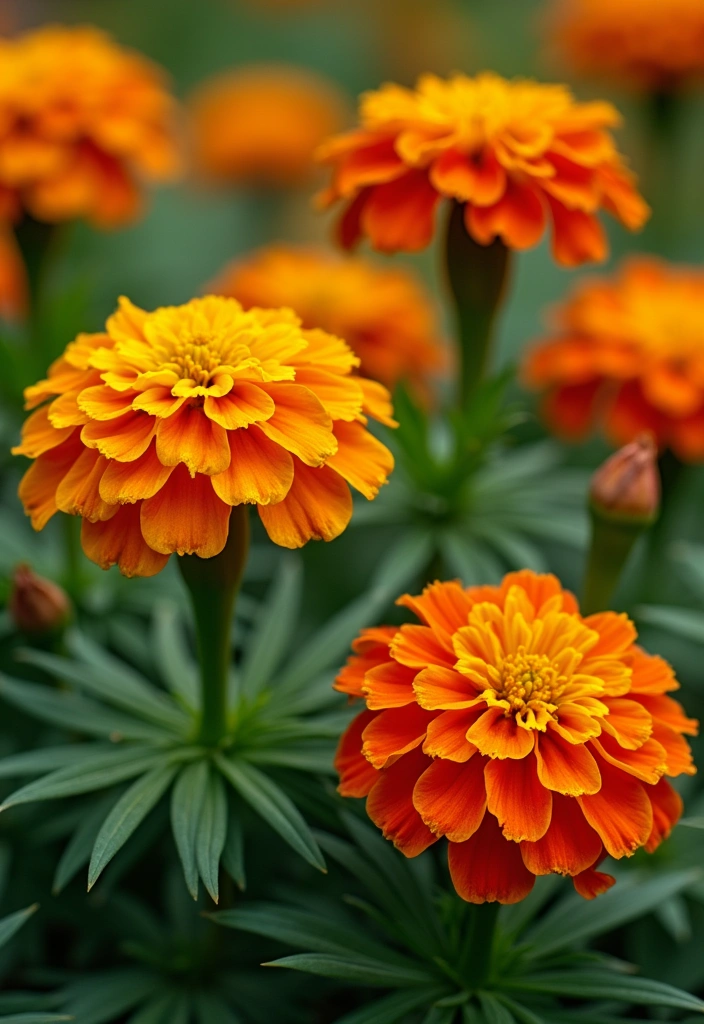
Marigolds are the classic garden companion with their bright orange and yellow blooms. They are incredibly popular for good reason: they not only add vibrant color but also help repel pests and attract beneficial insects. These annual flowers thrive in sunny spots and can bloom all summer long without needing deadheading.
Marigolds are easy to grow and can be used in flower beds, borders, or even as companion plants in vegetable gardens. Plus, they’re tolerant of various soil conditions and require minimal care, making them ideal for beginners.
Care Suggestions:
– Water regularly during dry spells but avoid overwatering.
– They appreciate dead leaves removed for better air circulation.
– Mix different varieties for an eye-catching display.
9. Coreopsis
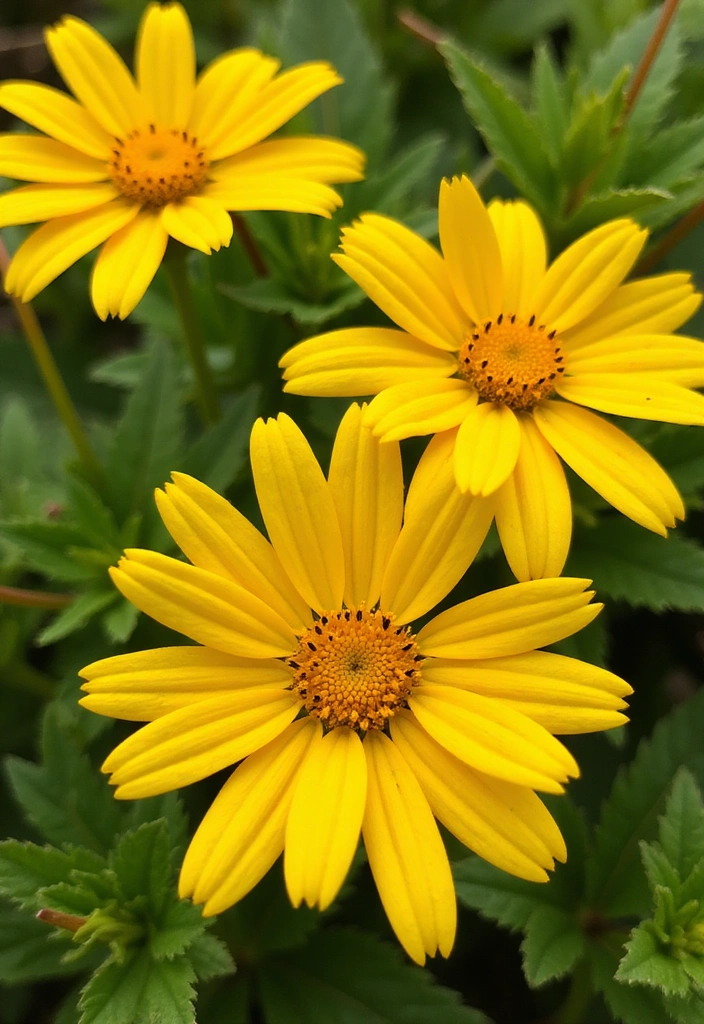
Coreopsis, also known as tickseed, is a delightful perennial that offers sunny yellow blooms throughout the summer. These flowers are incredibly hardy and adaptable, thriving in various conditions without the need for deadheading. Coreopsis produces abundant blooms, making it perfect for filling your garden with cheerful color.
They are also known for attracting butterflies, enriching your garden’s ecosystem. Their low-maintenance nature means they flourish with minimal care—just a bit of water and sunlight!
Planting Tips:
– Plant in full sun for the best blooms.
– Space them out to allow for growth and air circulation.
– Great for naturalizing; they can spread and fill in areas beautifully.
10. Asters
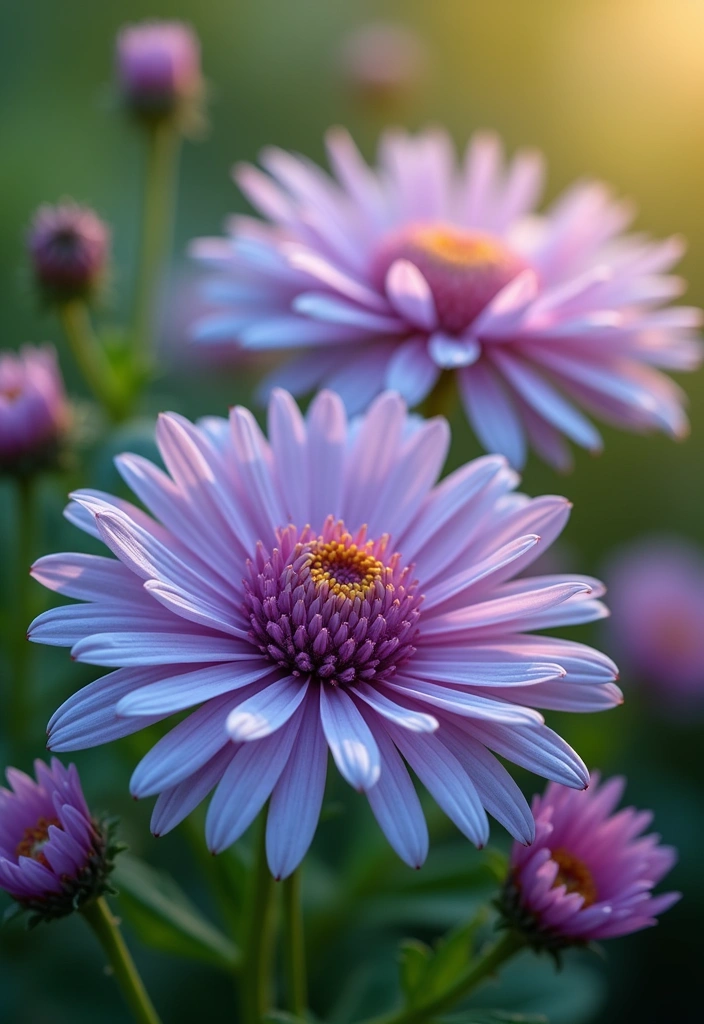
Asters are a charming addition to any garden, offering late-season color when many flowers have faded away. These perennials bloom in shades of purple, blue, pink, and white, creating a stunning display. They are low-maintenance and don’t need deadheading, allowing you to enjoy their beauty with ease.
Asters are perfect for attracting butterflies and other pollinators, making them a great choice for eco-conscious gardeners. Their versatile nature means they can be used in borders, mixed beds, or as standalone plants, complementing other flowers beautifully.
Care Tips:
– They thrive in full sun to partial shade.
– Water regularly during dry spells, especially in the first year.
– Cut back in the fall to promote healthy growth next spring.
11. Pansies
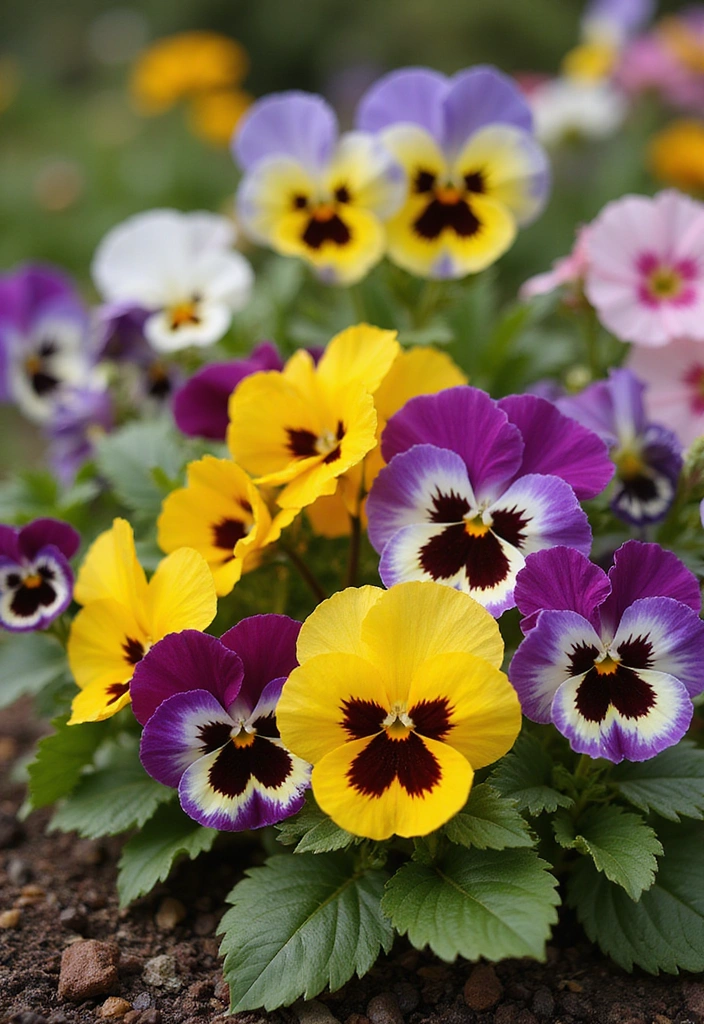
Pansies are one of the most beloved flowers for their vibrant colors and charming faces. These hardy annuals can bloom from early spring until frost, providing long-lasting visual appeal without needing deadheading. Their unique patterns and hues make them perfect for adding interest to your garden or containers.
Pansies thrive in cooler weather, which makes them excellent for early spring gardens. They’re also versatile; you can plant them in garden beds, containers, or window boxes to enhance any outdoor space.
Planting Suggestions:
– Plant in well-drained, fertile soil for best results.
– They enjoy full sun but can tolerate some shade.
– Water regularly, especially during dry spells, to keep them blooming beautifully.
Conclusion

Creating a vibrant garden doesn’t have to be a daunting task, especially with these 11 beautiful flowers that require no deadheading. They offer stunning colors, attract pollinators, and thrive with minimal care. By incorporating these plants into your garden, you can enjoy a flourishing landscape that requires little maintenance. Start transforming your garden today and enjoy the beauty of these resilient blooms all season long!
Happy gardening!

